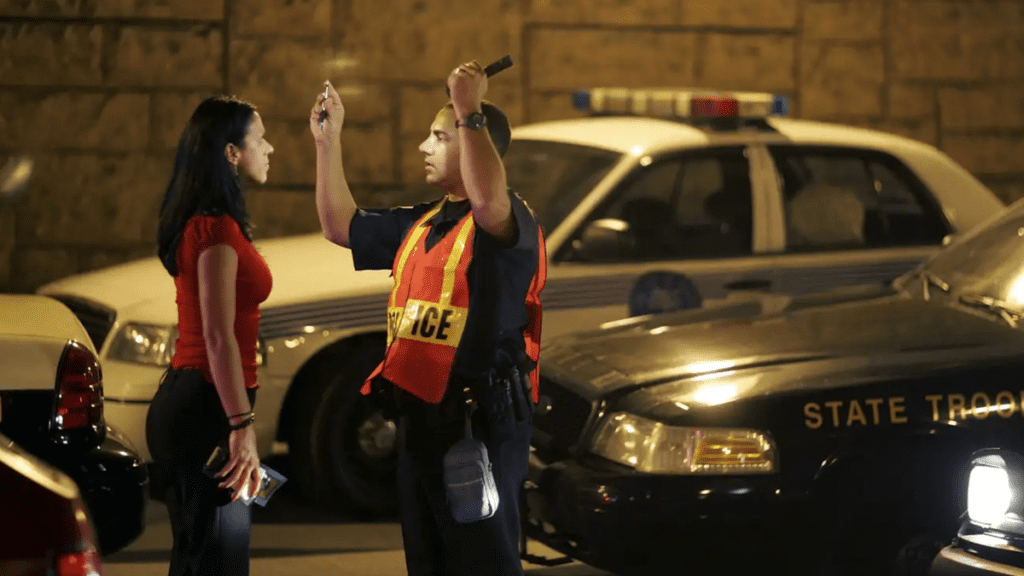Anti-Drunk Driving Tech Is Coming To Save 10,000 Lives Per Year

Federal car safety office the National Highway Traffic Safety Administration this week took a big first step toward requiring automakers adopt new technology to prevent intoxicated drivers from starting their vehicles. For the last two years the agency has been researching possible directions to take, and how the mandate will manifest. The administration has now released its summary of that research, and issued a call for public comment.
In 2021, Congress directed the agency, as part of a bipartisan infrastructure law, to determine the best way to move forward in this anti-drunk driving mandate. The law requires a new tech safety standard to be reached by November of 2024, assuming the technology is ready for adoption.
The infrastructure law requires near-instant blood alcohol testing be done on drivers passively. Current anti-drunk driving equipment uses a device the driver would have to blow into in order to start the car, and this isn’t going to be an acceptable requirement for new car buyers. NHTSA has been researching a touch-based sensor, as well as a passive breath analysis sensor, using both as a redundant system. It calls these sensors “DADSS” or Driver Alcohol Detection System for Safety. From the proposal:
The DADSS touch sensor measures the BAC in the capillary blood in the dermis layer of the skin on the palmar side of a driver’s hand. A touch pad with an optical module could be integrated into an ignition switch or steering wheel. When the driver touches the steering wheel or ignition switch, a near-infrared light shines into the driver’s skin. The portion of the near-infrared light that is reflected back is collected by the touch pad. This light transmits information about the skin’s chemical properties, including the concentration of alcohol present. The DADSS breath sensor uses detectors that simultaneously measure the concentrations of alcohol and carbon dioxide (CO2) in a driver’s exhaled breath. The diluted breath is drawn into a measurement cavity where optical detectors measure the amount of infrared light absorbed by the alcohol and CO2. Using these measurements, the driver’s BrAC is calculated.
More than 13,000 people were killed in drunk driving crashes in 2021, a stat that sharply rose during the 2020 coronavirus pandemic. Almost a third of traffic crash deaths that year involved drunk drivers. According to research from the government agency, this kind of passive anti-drunk driving technology could save as many as 10,000 lives in the U.S. alone. If automakers adopt this technology internationally, it could save countless more.
That said, there are still counterarguments to consider.
“NHTSA’s information gathering and research efforts have found that several technologies show promise for detecting various states of impairment, which for the purposes of this notice are alcohol, drowsiness, and distraction,” the agency wrote. “However, technological challenges, such as distinguishing between different impairment states, avoiding false positives, and determining appropriate prevention countermeasures, remain.”
The acting leader of the NHTSA, Ann Carlson, mentioned that even a system with 99.9 percent accuracy could result in over a million false positives every day. If stone sober people are prevented from driving their new cars because of this tech, it will face an aggressive backlash from the American public. There’s also historic precedent for this kind of backlash, including the 1970s regulation requiring automakers develop a seatbelt ignition interlock. Consumers revolted, and Congress quickly walked back the requirement, despite the fact that it could have likely saved hundreds of thousands of lives in the decades between then and now.
Americans, by and large, support the idea of reducing drunk driving as much as possible. Thus far the idea of this tech being mandated has seen largely positive feedback. Whether it’ll still see that support once in use will be seen in due time. It’s certainly a nuanced discussion, and the American public as a group are adept at holding nuanced discussions, especially as they pertain to personal freedoms and government oversight.




